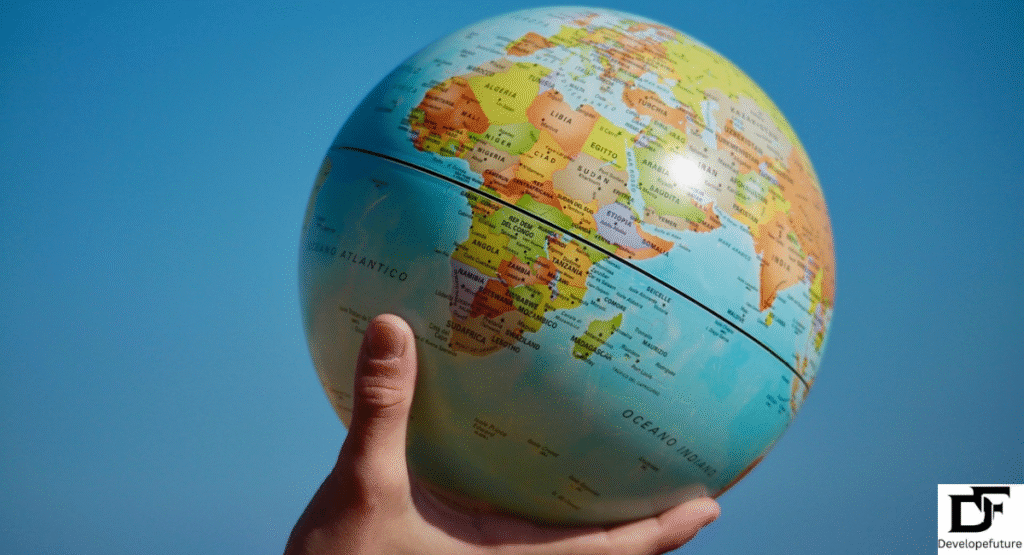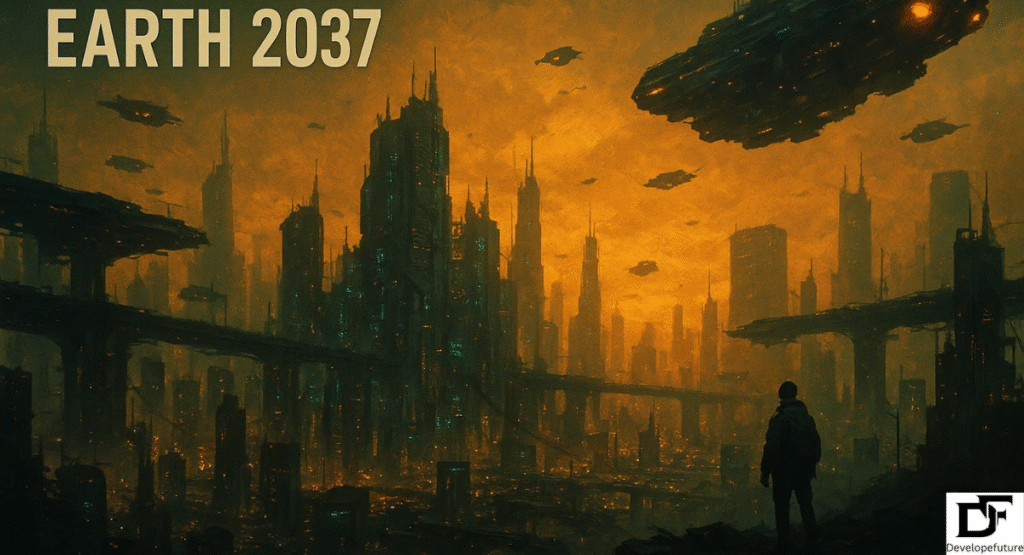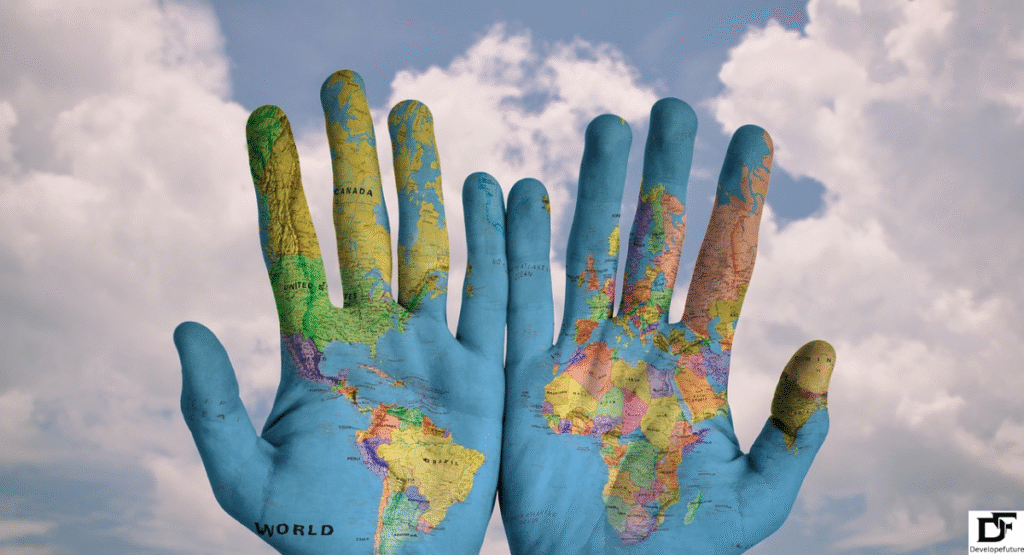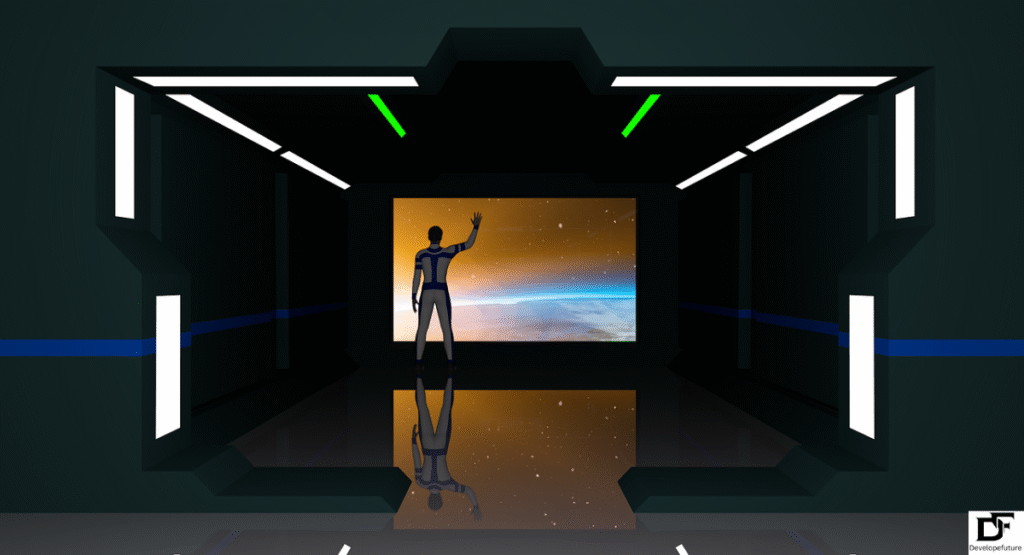Explore the future of Earth 2037 with predictions on technology, climate, nations, and global trends shaping our world. As we approach the midpoint of the 21st century, the pace of change has accelerated. Reshaping our understanding of technology, society, and the environment. People across the globe are now wondering what our planet will look like in two decades. Will it be a world of harmony and progress, or one defined by challenge and adaptation?
Exploring the future of Earth 2037 means considering not only the rapid advancements in artificial intelligence, biotechnology, and space exploration. But also the pressing concerns of climate change and resource management. These shifts will influence every nation. And every individual, regardless of geography or background. Our choices today will have shaped the opportunities and risks of the decades ahead.
To truly understand the future of Earth 2037. We must examine technology, environmental changes, global politics, and cultural trends in tandem. From bold predictions about medical cures to warnings about disappearing industries. Every forecast paints a piece of a complex picture. By weaving these narratives together. We can prepare ourselves for the realities. That awaits and makes informed decisions. That will define our shared destiny.
Table of Contents
Technology
The future of Earth 2037 will be dominated by unprecedented technological breakthroughs. That integrates seamlessly into daily life. Artificial intelligence will evolve far beyond its current capabilities. With autonomous systems running entire cities, manufacturing plants, and even space stations. Quantum computing will revolutionize problem-solving in ways we cannot yet imagine. From solving complex climate models to creating entirely new industries.
In the future of Earth 2037, communication will be instantaneous, immersive, and global. Augmented reality will replace smartphones. It allows information to be displayed directly in our line of sight. Space travel will be a more regular part of human experience. With lunar and Mars settlements beginning to form stable communities. These advances will bring both opportunities. And ethical dilemmas, requiring careful consideration of privacy, inequality, and human identity.

Climate
By the future of Earth 2037, climate change will be an undeniable force shaping every aspect of life. Rising sea levels, extreme weather events. And shifting agricultural zones will require global cooperation on an unprecedented scale. Renewable energy adoption will be nearly universal. But its implementation will come too late to fully reverse some of the damage already done.
The future of Earth 2037 will also see massive investments in climate engineering. Such as carbon capture, atmospheric cooling technologies, and large-scale reforestation. While these interventions will mitigate the worst effects. They will spark debates about long-term safety and unintended consequences. The balance between adaptation and prevention will be at the heart of environmental policy.
Nations
Political and economic power will be more evenly distributed across regions. Asia and Africa will emerge as major centers of innovation. While traditional superpowers will adapt to a more multipolar world order. International collaboration will be necessary to address borderless challenges like cybersecurity threats, pandemics, and resource distribution.
The future of Earth 2037 will also see shifts in national priorities. With education, technology regulation, and sustainability becoming the pillars of governance. Global organizations may gain more authority. But cultural differences will continue to shape decision-making processes. Cooperation and competition will exist side by side, creating a dynamic geopolitical landscape.

2027 FIFA Women’s World Cup (Jdbwright91)
Sports events like the FIFA Women’s World Cup will continue to play a unifying role in society. The 2027 edition will be remembered for breaking attendance and viewership records. Further solidifying women’s sports as a global phenomenon. This will also set the stage for more equal funding. And sponsorship opportunities in the decades ahead.
Sports will be even more interconnected with technology. With virtual reality broadcasts allowing fans to experience games as if they were on the field. Player training will use biomechanical analysis and AI-driven performance models. It will raising the level of competition worldwide.
In the year 2030, will the world become more futuristic or will it look much like it does today?
By 2030, many of the seeds of the future of Earth 2037 will already be planted. Cities will be smarter, cleaner, and more automated. But the visual landscape may still retain familiar elements. Such as traditional architecture and transportation systems.
However, subtle changes will set the stage for a more transformative era. Self-driving infrastructure, AI-managed economies, and sustainable urban designs will create a blend of the familiar and the futuristic. This hybrid reality will slowly transition into the fully realized vision of the future .

What will the world look like in the year 2037?
The future of Earth 2037 will likely be defined by resilience and adaptation. While climate and technological challenges will be significant. Humanity will find ways to thrive through innovation, cooperation, and resourcefulness.
Megacities will function as hubs of green energy and AI-managed logistics. While rural regions will benefit from advanced agricultural systems. Societies will focus on creating balance between technological advancement and human well-being.
Singularity date prediction tool based on research: 2037~2044
The term “singularity” refers to the moment when artificial intelligence surpasses human intelligence. Based on current research, many predict this could occur between 2037 and 2044.
If this aligns with the future, humanity will face unprecedented questions about autonomy, governance, and morality. The transition could bring immense prosperity or significant disruption, depending on preparation.
In future history, the year “2020” may well earn its place…
The year 2020 will likely be remembered as a turning point that accelerated the future of Earth 2037. It marked the beginning of a technology-driven transformation influenced by pandemic adaptation, remote work, and digital integration.
From this point onward, innovation accelerated, shaping the way we interact, govern, and address crises. This momentum will carry us forward into the new realities of 2037.

What are your medical treatment/cure predictions for the next decade or so?
Medical technology in the future of Earth 2037 will be capable of curing diseases once thought untreatable. Gene editing, personalized medicine, and nanotechnology will revolutionize healthcare. It will allow treatments to be tailored to an individual’s DNA.
Life expectancy could increase significantly. But access to these technologies will remain a challenge in less developed regions. Balancing equity with innovation will be a global priority.
Why do so many people point to predictions of the future from 40+ years ago…
Skepticism about future predictions comes from past examples where forecasts missed the mark. The future of Earth 2037 benefits from far more accurate data, faster testing cycles. And advanced modeling techniques.
While uncertainty will always exist. The ability to make informed projections has improved dramatically. It is giving more credibility to today’s forecasts.
What 2030 might look like
The world of 2030 will serve as a stepping stone toward the future of Earth 2037. Many innovations, from clean energy networks to AI-driven governance. It will be operational but still evolving.
This transitional period will help societies adapt, test policies, and address challenges. Before entering the more advanced realities of 2037.
What futures are we not ready for?
The future of Earth 2037 could bring scenarios humanity is unprepared to handle. Such as fully autonomous AI governance, synthetic biology risks, or deep climate crises.
These possibilities must be proactive strategies, ethical frameworks. And global readiness plans to avoid disruptive consequences.
What technology do we have right now…
Many technologies that will define the future of Earth 2037 already exist today. It may include AI, renewable energy systems, and advanced robotics.
The difference will lie in their integration and scaling. Which will transform them from experimental tools into everyday necessities.
What things do you think are going to disappear in the 2030s?
By the future of Earth 2037, certain industries and habits will fade away. Including fossil fuel dependence, paper-based systems, and perhaps even physical cash.
These changes will reshape economies, employment, and social interaction. Ushering in a cleaner and more efficient way of living.
2025 the most depressing year in human history?
While 2025 may bring challenges. It will also present opportunities to set the course for the future of Earth 2037.
Difficult years often lead to periods of intense innovation. And transformation, which could ultimately benefit humanity in the long run.
How sure are we that year 0 was actually 2025 years ago?
Historical dating methods may be imperfect. But the future will likely see far more precise chronologies thanks to advanced archaeology and AI-driven historical analysis.
These improvements could reshape our understanding of history, timelines, and cultural development.
Wondering if the future is going to be like this
Speculation about the future of Earth 2037 will remain a constant part of human curiosity. Whether it matches our current visions depends on innovation, policy choices, and societal values.
By observing trends now, we can better anticipate and shape the kind of future we desire.
My predictions for some of the things that’ll happen in the 2030s
Predictions for the 2030s include breakthroughs in energy storage space colonization, and disease eradication . All paving the way for the future of Earth 2037.
This decade will act as a final testing ground before entering a more technologically mature and globally connected era.
Global warming hits 1.5°C
By the future of Earth 2037, global warming will have surpassed the 1.5°C threshold. It is impacting ecosystems, agriculture, and human health.
Mitigation efforts will focus on adaptation strategies. But the consequences will be felt worldwide.
Global population reaches 9 billion
The future of Earth 2037 will see the global population at around 9 billion. It is creating both opportunities and challenges.
Resource management, urban planning, and equitable distribution will be vital to maintaining stability in this populous world.
FAQ’s
Will artificial intelligence dominate the future of Earth in 2037?
Yes, AI will play a major role in governance, industry, and daily life.
How will climate change affect the future of Earth in 2037?
It will shape policies, technology adoption, and resource distribution worldwide.
Will population growth cause major challenges by 2037?
Yes, but innovative planning can help manage the strain.
What is the singularity, and will it happen by 2037?
It refers to AI surpassing human intelligence, which could happen around that time.
Can we influence the future of Earth 2037?
Absolutely — today’s actions directly shape tomorrow’s world.
Conclusion
The future of Earth 2037 is a mosaic of possibilities shaped by technology, climate, politics, and human choices. From AI breakthroughs to environmental shifts. The coming decades will demand adaptability, creativity, and cooperation. By studying trends today, we can prepare for the world we want to create.

